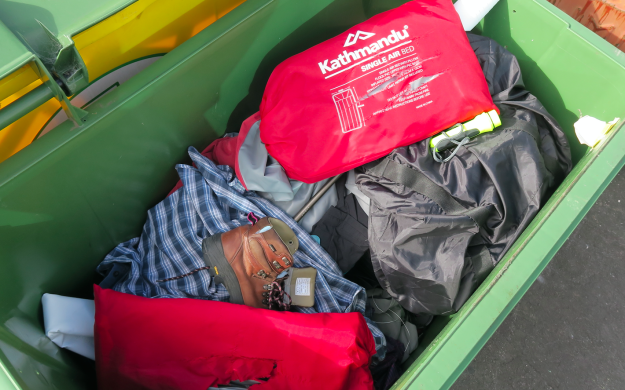
Student journalist Nicole Barratt photographed stock that appears to have been destroyed with box cutters in late May. Four staff members from other shops on Barrys Point Rd, Takapuna, told Barratt they had witnessed Kathmandu staff “slashing sleeping bags” and “slicing through clothing” before tossing the damaged goods into landfill dumpsters.
Once the details found their way to social media, consumers started asking questions, which centered around two issues:
1. How could all of these products possibly be deemed unfit for use?
2. Why are these products going straight to the landfill instead of being recycled?
Kathmandu responded promptly with a post on its Facebook page.
The post emphasised Kathmandu’s environmental code of conduct, but did very little to quell the concerns of consumers. Predictably, the consumer response was that of outrage, which propelled the issue into national media and continued across Kathmandu’s social media channels for several days.
Gerry McCusker, author and reputation management expert, shed light on how Kathmandu should have responded in the context of the emotionally charged social media landscape.
McCusker observed that the company’s crisis management had clearly not been reconditioned to deal with this emotional backlash.
“When emotions are running high, a factual and precise response leaves people unsatisfied,” he says.
McCusker feels Kathmandu’s response sought to avoid emotion, which was typical of the old world of reputation management – before the advent of social media.
Social media is about conversations and this should encourage companies to be more empathetic, he says.
“Kathmandu has ‘talked’ a lot, and there is a huge amount of heat on social media,” McCusker says. He says a more effective response would have included people from the company, perhaps in the form of a video foregrounding “real people with a real empathetic response” at the store in question.
“Their response was well informed, however they could have visualised it and put it in the context of a video narrative,” says McCusker.
Kathmandu followed its initial response with a more detailed and explanatory comment to its Facebook page. This attempted to more accurately answer the loudest questions coming from social media.
Despite this, the company still received many angry responses from consumers who didn’t believe there was enough care taken immediately after the issue was raised.
This article originally appeared on The Register.




